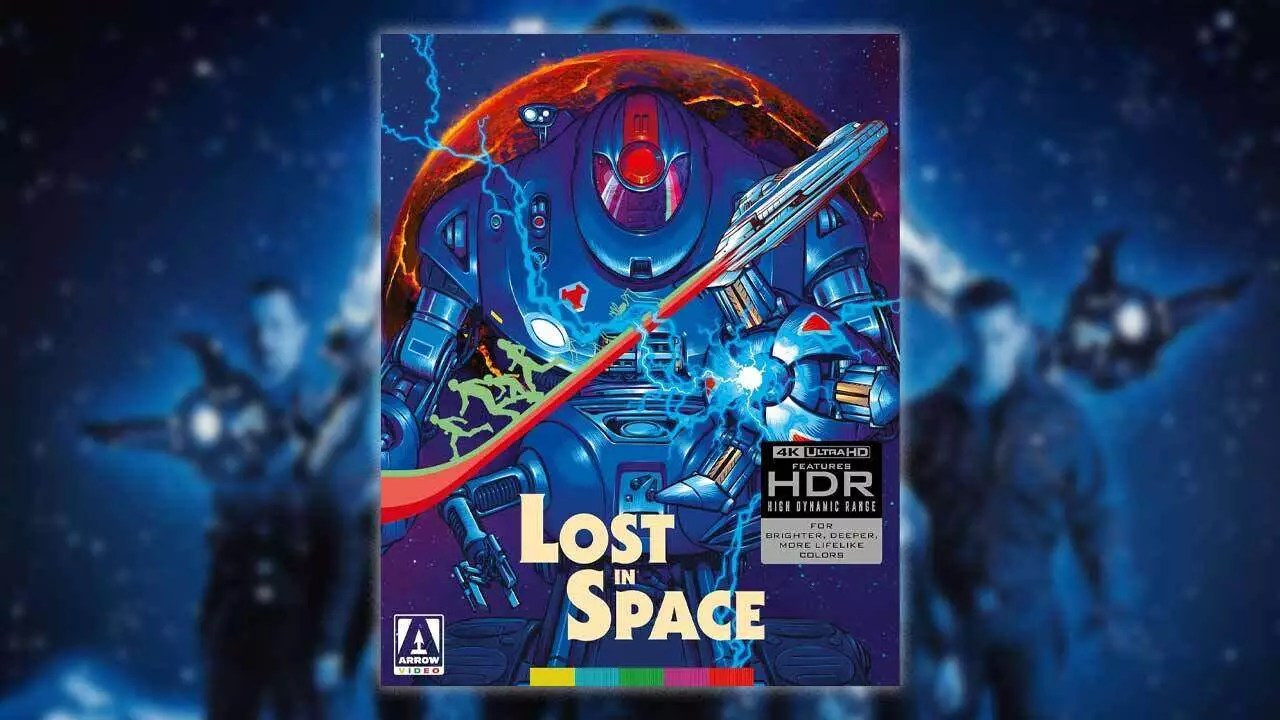In an era where digital streaming has made any movie accessible at the tap of a screen, the value of physical media—particularly high-definition restorations—remains vital for cinephiles and collectors alike. Arrow Video’s upcoming 4K release of *Lost in Space* exemplifies how restored classics transcend mere entertainment to become cherished artifacts of cinematic history. Initially met with lukewarm reviews in 1998, the film found its true identity in the hands of devoted fans, cult followers, and those seeking visual authenticity. This release isn’t just about watching a movie—it’s about immersing oneself in a meticulously preserved piece of cinematic craftsmanship.
Considering the fact that the original 1960s TV series was seldom celebrated critically, it’s remarkable how both the show and its cinematic adaptation have matured into icons of pop culture. Modern audiences who have embraced the Netflix reboot might overlook the significance of the 1998 film’s contributions. Yet, this new *Lost in Space* edition offers a portal back in time—an opportunity to appreciate the film’s ambitions, flaws, and its unique visual style. Restoration efforts by Arrow, approved by director Stephen Hopkins himself, emphasize the importance of presenting the film in its intended glory, underscoring how proper preservation can elevate even films that initially underperformed critically.
High-Quality Restoration: More Than Just a Technological Feat
Whereas many films languish in obscurity due to poor preservation or low-definition transfers, *Lost in Space* gets a second wind thanks to 4K ultra-high-definition restoration. Using the original camera negative, the film’s visuals are now sharply refined, bringing to life the ambitious special effects that were groundbreaking at the time. The inclusion of High Dynamic Range technologies like Dolby Vision and HDR10 amplifies visual clarity and color vibrancy, providing an experience that rivals modern blockbuster standards.
This is not simply about pixel count—the restoration aims to resurrect the film’s mood, atmosphere, and detail that could have been lost with time. It is a rare but crucial step to ensure that future generations can experience it as close as possible to its original intended presentation. Furthermore, the addition of lossless stereo and DTS-HD Master Audio 5.1 redefines auditory engagement, immersing viewers in a layered soundscape that complements the visual overhaul. These technological advancements aren’t mere bells and whistles—they demonstrate an understanding that the medium of cinema is multisensory, and that to truly appreciate a film’s craftsmanship, both sight and sound must be treated with respect.
The Collector’s Dream: Packaging, Extras, and the Value of Tangibility
Beyond technical specifications, this *Lost in Space* edition appeals strongly to collectors and devoted fans. The inclusion of reversible sleeve art—featuring the original theatrical poster on one side and a bespoke illustration exclusive to this release on the other—embodies a respect for the film’s history and its evolution over time. When physical media is often dismissed as obsolete, premium editions like this reaffirm the importance of owning artifacts that are as aesthetically pleasing as they are historically significant.
The accompanying illustrated booklet—rich with production notes, interviews, and articles—embeds fans deeper into the film’s creative process, transforming the viewing experience into an educational journey. Bonus features like new interviews with cast and crew, archival footage, and commentaries enrich understanding and foster a more personal connection to the film. Such content transforms a simple purchase into an investment in cinematic preservation, underscoring the devotion with which Arrow Video treats classic titles.
The Cultural Significance of Restoring Cult Classics
Films like *Lost in Space* often occupy a paradoxical space—they are initially commercial successes, yet they struggle to garner immediate critical acclaim. Over decades, however, their influence persists, shaping genres and inspiring new adaptations. The cultural importance of technical restorations lies in their power to rekindle interest, recontextualize these works, and ensure they are appreciated within a historical continuum.
This release exemplifies a broader movement: the recognition that nostalgia can be more than a sentimental attachment. It is a celebration of craftsmanship, a scholarly artifact, and a testament to a film’s enduring legacy. By restoring and re-releasing such movies, studios like Arrow Video affirm their commitment to cinematic stewardship, honoring movies that might otherwise fade into obscurity. For viewers, this isn’t just a sale or a collectible—it’s a chance to engage with history in high fidelity, re-examining beloved stories with fresh eyes and sound.
High-quality restorations like this one serve a purpose far beyond the immediate spectacle—they preserve the soul of cinema itself. As technology advances, the importance of meticulous preservation grows, ensuring that even films with modest initial reception can attain the reverence they deserve. The *Lost in Space* 4K edition stands as a testament to the belief that every piece of cinematic history has value, and that with proper care, these stories can continue to inspire for generations to come.


Leave a Reply